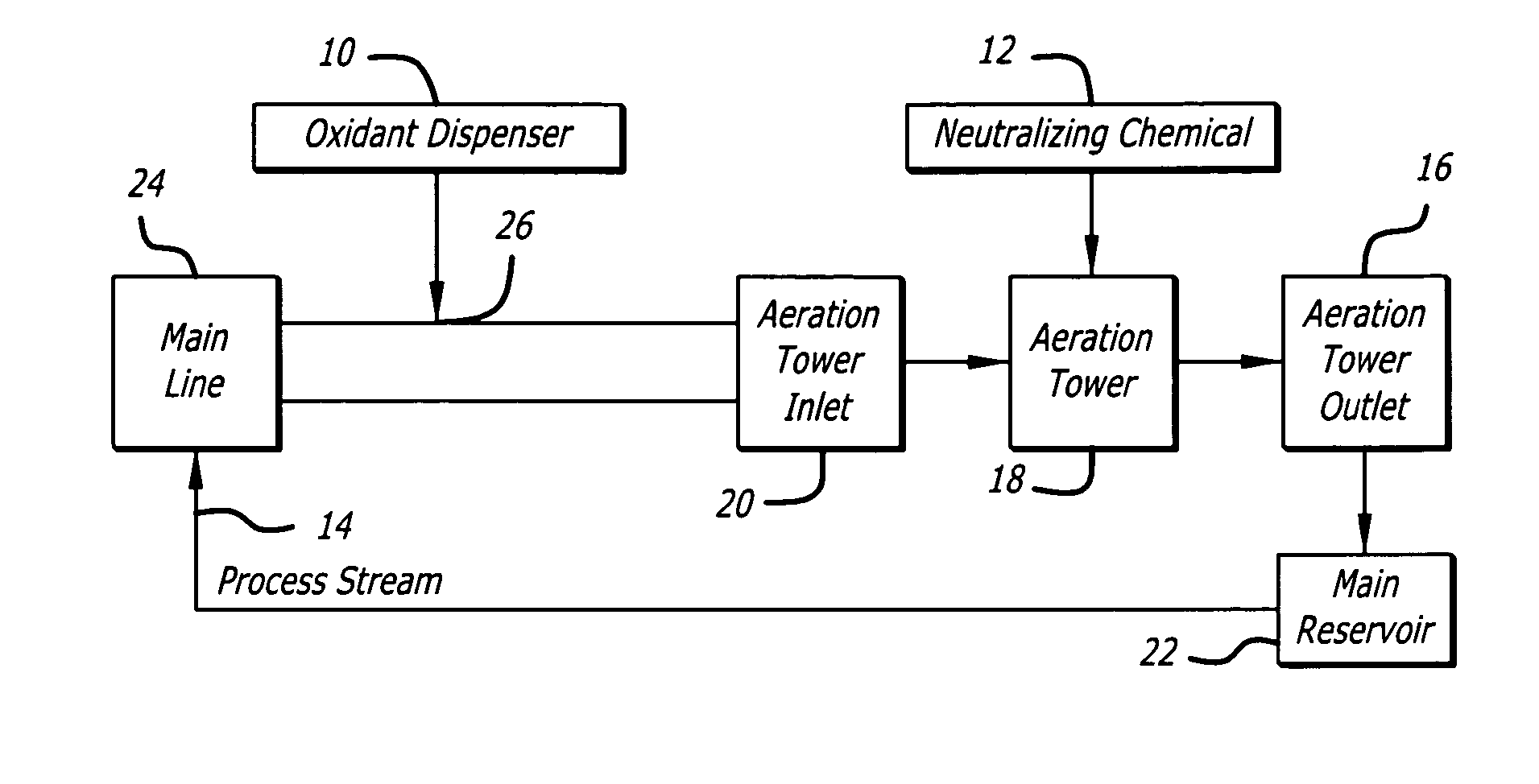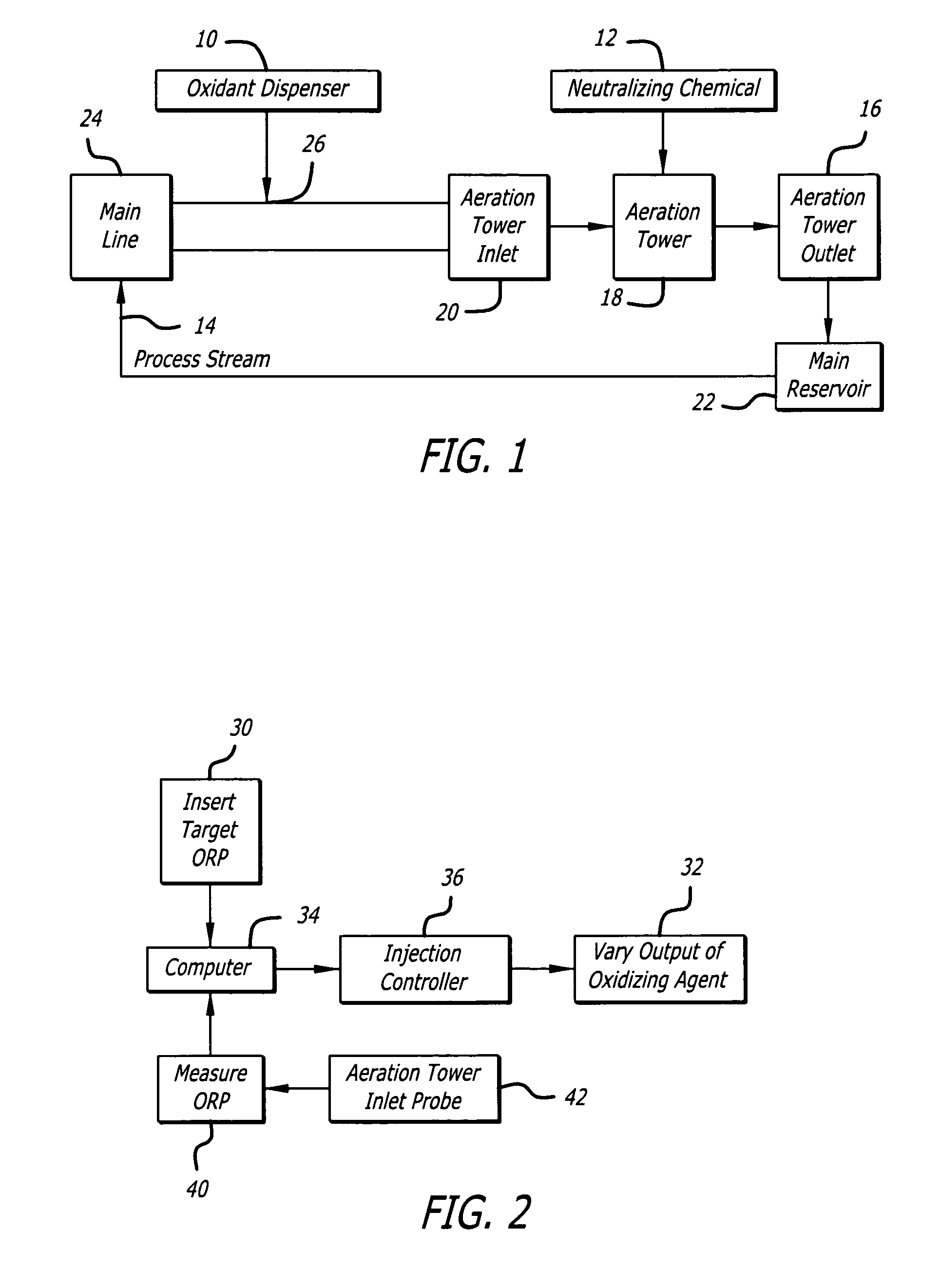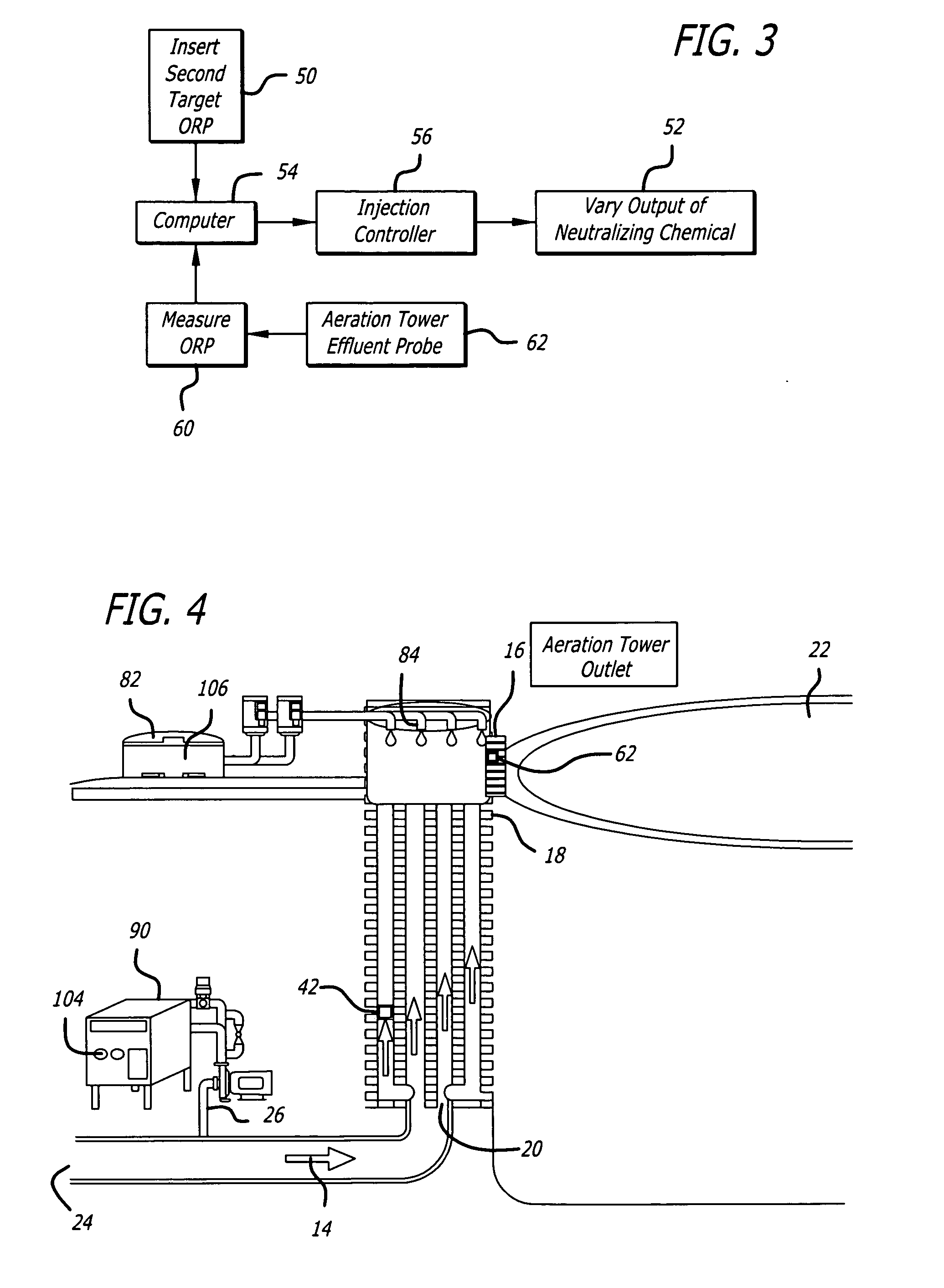Process control oxidation
a technology of process control and oxidation, which is applied in the direction of water cleaning, other chemical processes, separation processes, etc., can solve the problems of residual oxidant oxidation, affecting the reaction dynamics between the introduced oxidant and the contaminant, and not being able to control the amount of residual oxidan
- Summary
- Abstract
- Description
- Claims
- Application Information
AI Technical Summary
Benefits of technology
Problems solved by technology
Method used
Image
Examples
Embodiment Construction
[0081] Particular embodiments of the invention are described below for the purpose of illustrating its principles and operation. However, various modifications may be made, and the scope of the invention is not limited to the exemplary embodiments described below.
[0082] One general embodiment of the system and method of the present disclosure is illustrated by FIG. 1. Here, a process stream 14 containing water from a water source, such a main reservoir 22, for example, is obtained. In one example, main reservoir 22 is an aquatic tank or aquarium, such as those typically found at aquatic water parks and that contain aquatic life forms that excrete bodily fluids into the water of the tanks. However, any body of water, such as a lake or ocean, may have water taken from, treated and returned in accordance with the teachings provided herein. The process stream 14 flows through a main line 24. At a main line injection point 26, at least one oxidant is added to the process stream 14 from ...
PUM
| Property | Measurement | Unit |
|---|---|---|
| oxidation reduction potential | aaaaa | aaaaa |
| oxidation reduction potential | aaaaa | aaaaa |
| oxidation reduction potential | aaaaa | aaaaa |
Abstract
Description
Claims
Application Information
 Login to View More
Login to View More - R&D
- Intellectual Property
- Life Sciences
- Materials
- Tech Scout
- Unparalleled Data Quality
- Higher Quality Content
- 60% Fewer Hallucinations
Browse by: Latest US Patents, China's latest patents, Technical Efficacy Thesaurus, Application Domain, Technology Topic, Popular Technical Reports.
© 2025 PatSnap. All rights reserved.Legal|Privacy policy|Modern Slavery Act Transparency Statement|Sitemap|About US| Contact US: help@patsnap.com



